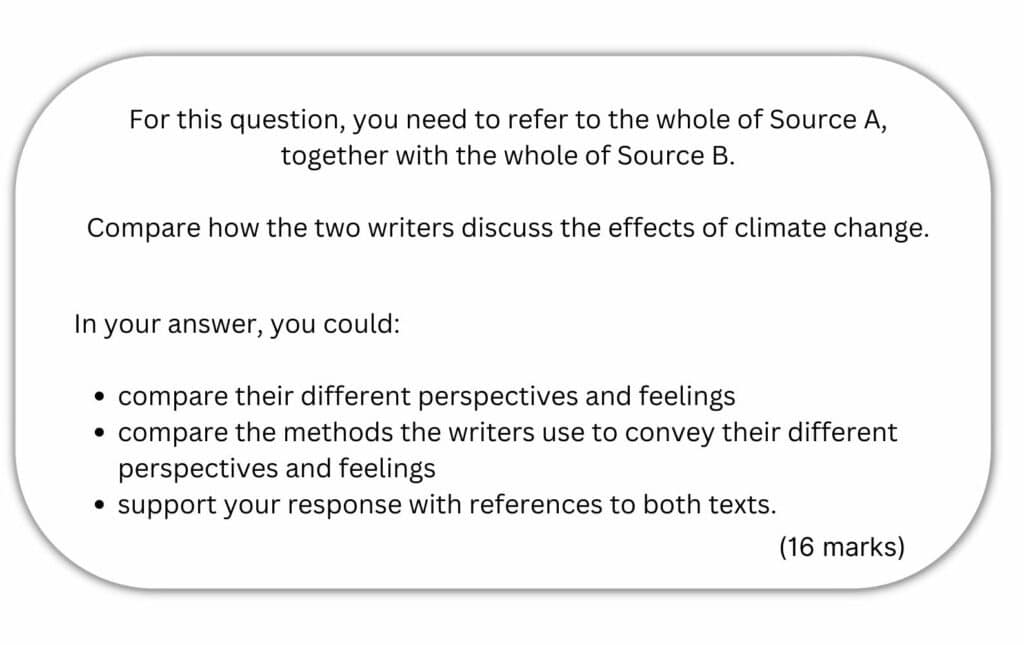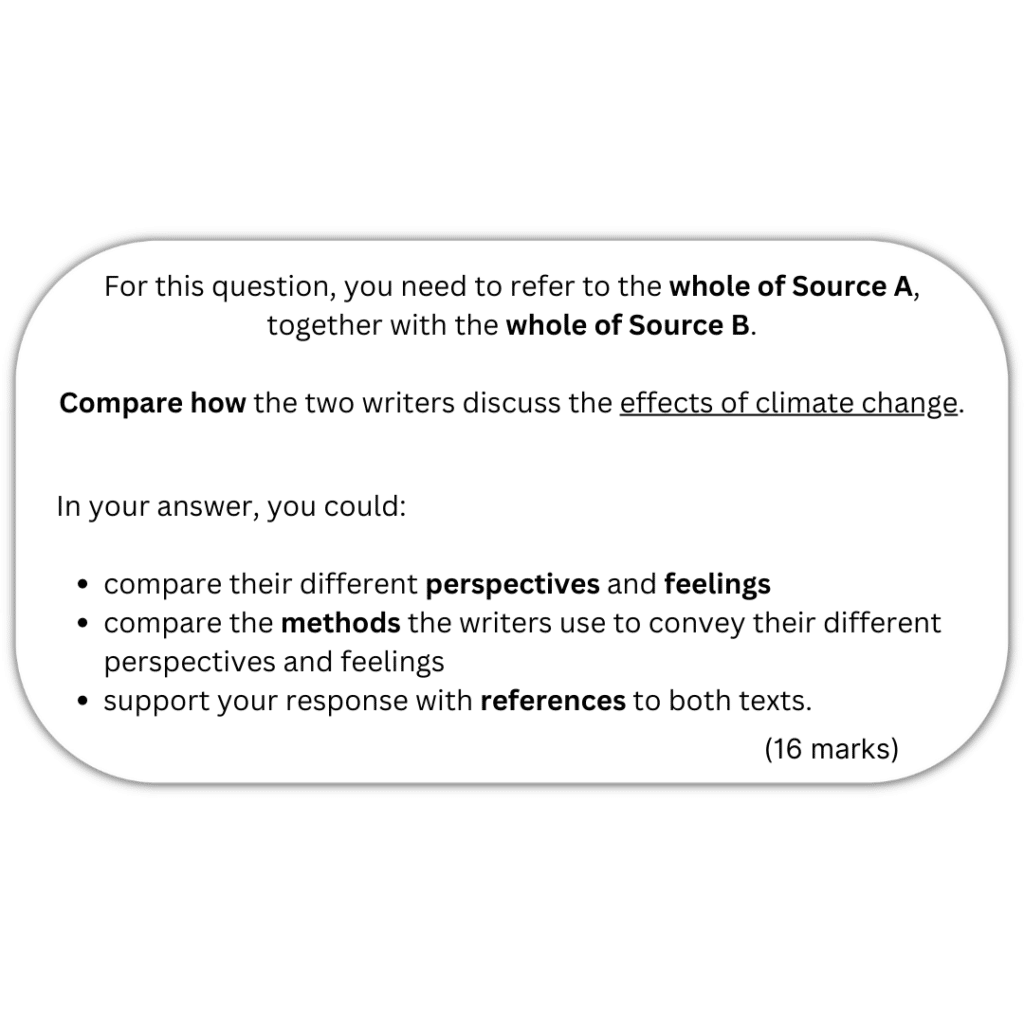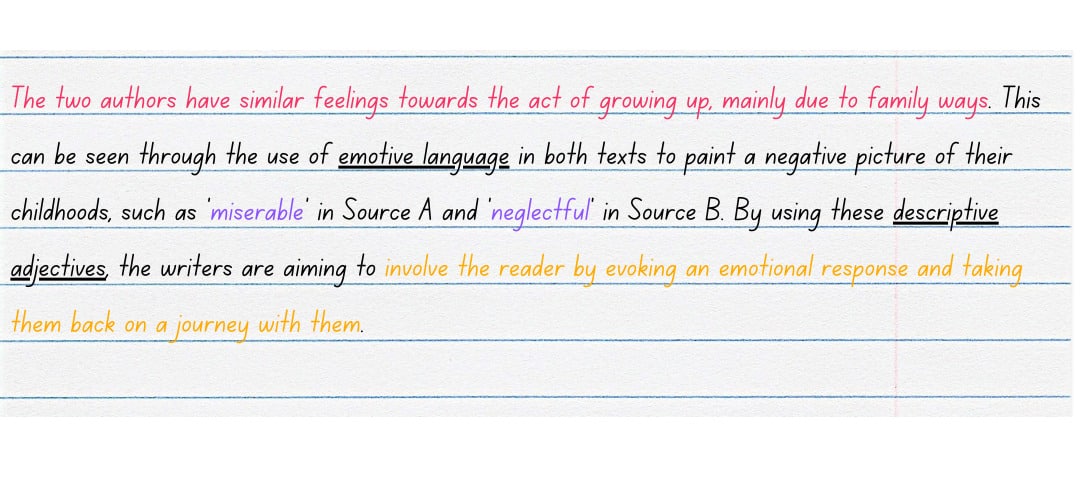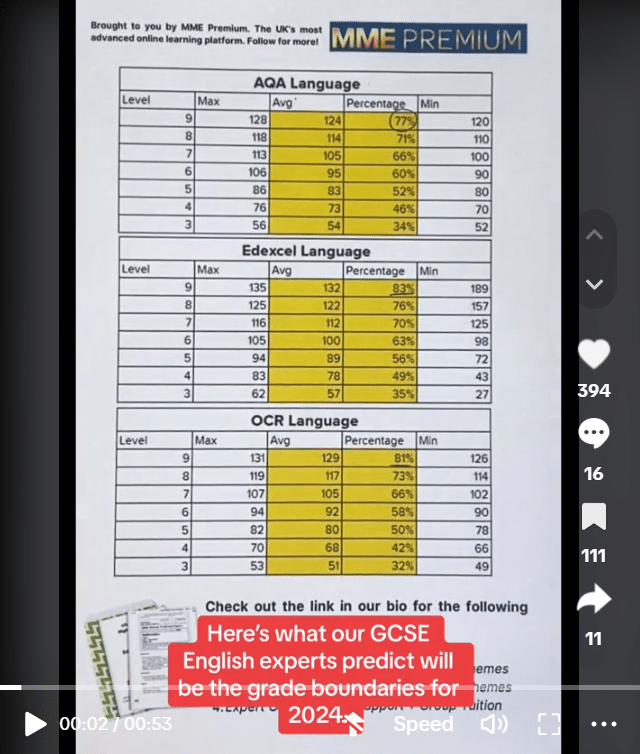AQA: Paper 2 Question 4
AQA: Paper 2 Question 4 Revision
AQA: Paper 2 Question 4
This page will provide information on how to ace Question 4 of Paper 2, including:
- The format of the question
- How to approach answering the question
- The Assessment Objective (AO) of the question
- A model answer that demonstrates what is expected
Let’s start with the AO…
Assessment Objective (AO)
Question 4 is covered by AO3!
For AO3, you are required to:
- Compare writers’ ideas and perspectives, as well as how these are conveyed, across two or more texts.
Here, you are being assessed on your ability to analyse different methods and show a perceptive understanding of different viewpoints in both texts.
Question Format

Question 4 is designed to find patterns between the two texts.
On the right is an example question that you can expect to find in your exam.
Here, you will need to compare how the writers convey a certain topic.
The question will also give you three bullet points to give you an idea on what to include in your answer. You do not have to use all three, but they are there to help you!
Key terms in Question 4

In Question 4, you will be asked to refer to the whole of Source A, and the whole of Source B, so make the most of them!
You will be given a particular topic to focus on which has been underlined. Here, it is about the effects of climate change.
A key word here is ‘how‘. This is basically asking if any structural or language features have been used when conveying information.
It is important to explore common themes and ideas equally across both texts. Remember to support your points with details (evidence) from Source A and Source B.
Timings
Question 4 is the highest mark question out of Section A.
Therefore, it is recommended you spend a bit longer on it than previous questions.
It does require a detailed analysis, however you will have a good understanding of both source texts by this point, so it is recommended that you allow around 20 minutes within the exam to answer Question 4.
Q4 = usually takes around 20 minutes for students to complete
How to Approach

This question is one that requires detail from both source texts, meaning you have to have a range of points in your answer that is relevant to the question.
For longer answers, it is important to use the PEEL paragraph method as we have seen on previous pages:
Point = What is your overall point?
Evidence = Can you support it with evidence from the texts?
Explanation = What effect does this have on the reader and the text as a whole?
Link = How does this point relate back to the question?
What to look out for…
Again, annotating the texts is important so you remember what you want to include in your answer.
This is why it is also important to flick through the questions beforehand, so you can make a mental note of the points you want to include as you go along.
Although it is not stated, it may be useful to add in an introduction and conclusion to bigger mark questions to structure your answer and signpost the examiner. However, this can be as short as a sentence each!
Additionally, try to analyse both similarities and differences in your answer to demonstrate a perceptive and detailed understanding of ideas in both texts. This can include analysis of both structural and language features.
After identifying what you want to include from the texts, think about the effect of each feature.
Example: Extract from a Model Answer
Below is a snippet of a model answer which provides an idea of the analysis you will need to include in Question 4:
‘For this question, you need to refer to the whole of Source A, together with the whole of Source B.
Compare how the writers convey their feelings about growing up.
In your answer, you could:
• compare their different perspectives and feelings
• compare the methods the writers use to convey their different perspectives and feelings
• support your response with references to both texts.’
(16 marks)

Why is this a good answer?
- The PEEL paragraph technique is used to convey information clearly.
- The quotes included are short and relevant, and integrated well into sentences.
- A language feature is correctly identified and the overall effect is given.
- A similarity is correctly identified and the writers’ feelings are compared.
Note: You will need to include a lot more detail than this – it’s only a snippet!

MME Premium Membership
£19.99
/monthLearn an entire GCSE course for maths, English and science on the most comprehensive online learning platform. With revision explainer videos & notes, practice questions, topic tests and full mock exams for each topic on every course, it’s easy to Learn and Revise with the MME Learning Portal.
Sign Up Now

